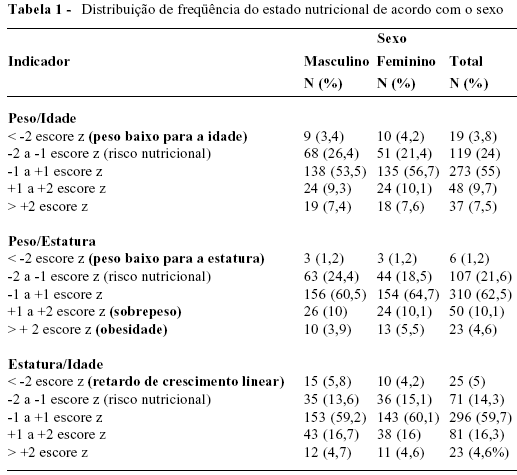OBJECTIVE: To establish the nutritional diagnosis of children living in a low-income community through anthropometric evaluation, detecting insufficient nutrition (low weight-for-age, wasting and stunting) and excessive nutrition (overweight and obesity). METHODS: A community-based survey identified children below 11 years living in a low-income community. Their weight and height (or lengths) were measured. The National Center for Health Statistics growth curve was used as reference. The cut-off points used were: low-weight-for-age z score of < -2 (weight-for-age), wasting (weight-for-height) and stunting (height-for-age); respective overweight and obesity z scores of +1 to +2 and of > +2, according to weight-for-height. RESULTS: Prevalence rates were 3.8% for low weight for age, and 24% for low-weight-for-age risk factors; 1.2% for wasting, and 21.6% for wasting risk factors; 5% for stunting, and 14.3% for stunting risk factors; 10.1% for overweight, and 4.6% for obesity. CONCLUSIONS: Main nutritional issues were present in children from that community, with simultaneous occurrence of chronic malnutrition and obesity.
nutrition in childhood; malnutrition; prevalence; indicator; low weigth for age; wasting; stunting; overweight; obesity


